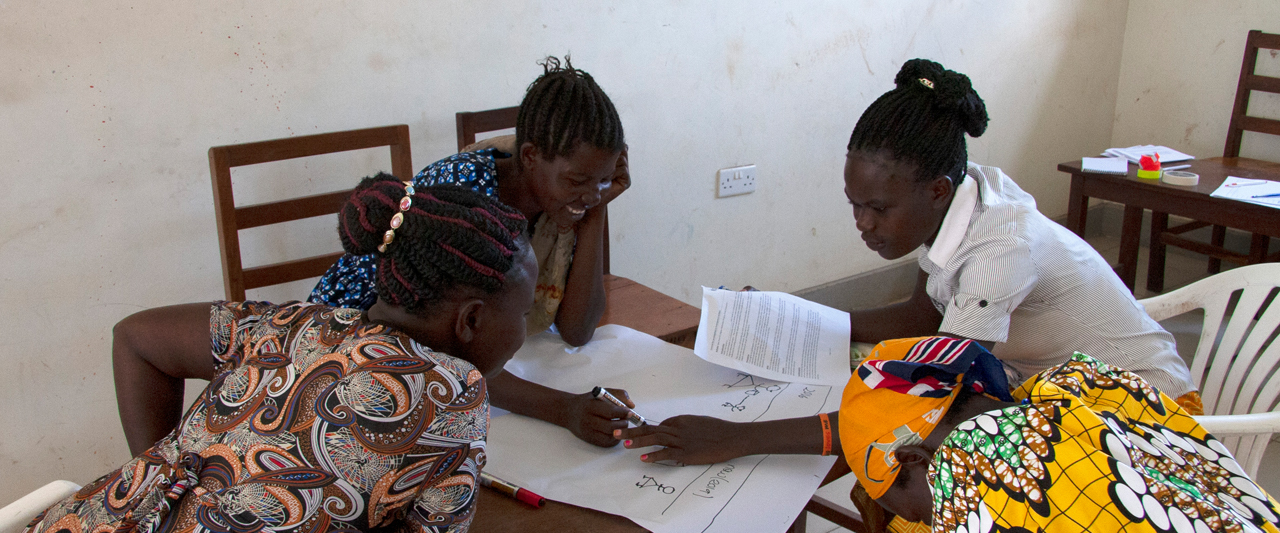No matter when or where it surfaces, the stigma surrounding abortion has a profound and negative impact. It shames and silences women and girls in need of safe abortion care, subjects abortion providers to harassment and wrongful arrest, and its many other harmful effects ripple through lives and communities.
Over the past three years, Ipas staff and partners in Kenya and Uganda have been working to reduce abortion stigma and improve access to safe abortion care in several counties along the Kenya-Uganda border. Through outreach to women and girls, teachers, religious leaders, policymakers and community members, the project has delivered a key message: Breaking the silence around abortion is important and can save lives.
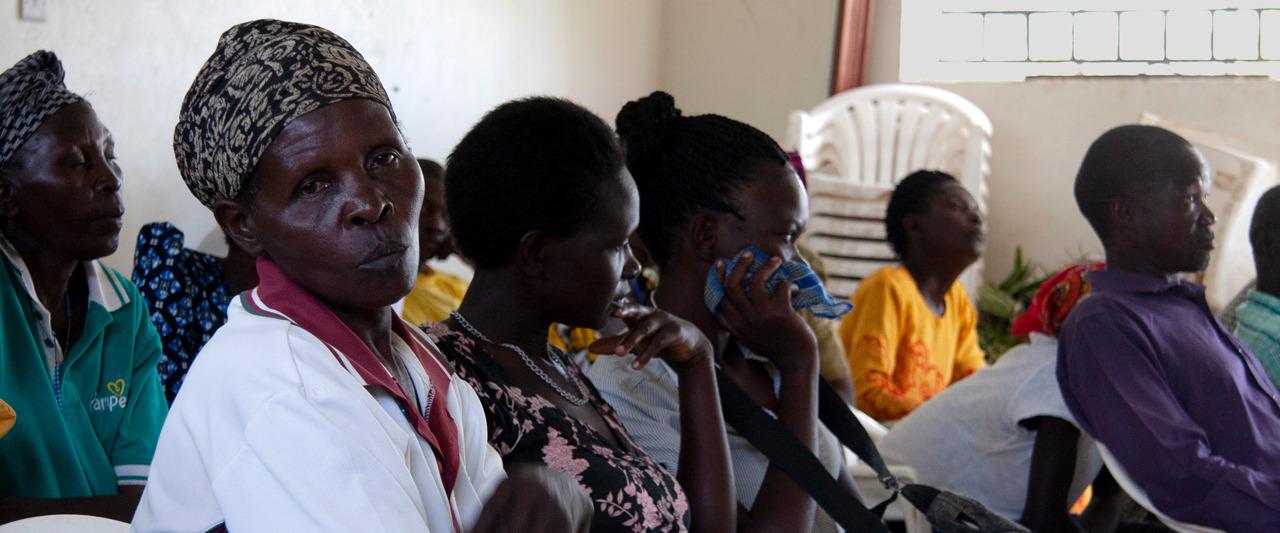
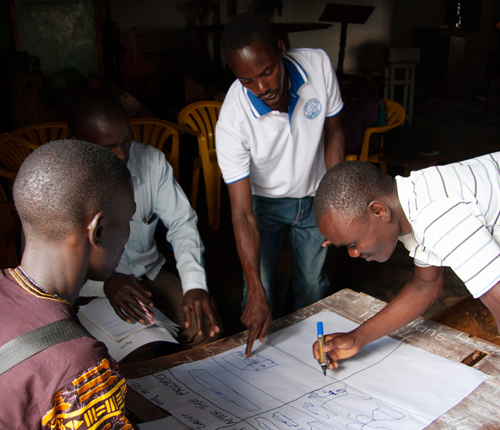
Project evaluation sessions in Uganda: Malaba (above) and Nabuyoga (below)
Just one of the stigma-related stories that has come to light concerns the death of a young woman in Uganda. She was a teenager who had been impregnated by her elder brother. By the time her grandmother brought her to a health facility for an abortion, she was seven months pregnant—well beyond the first-trimester services available there. Five days later, the young woman returned to the facility, this time frail and pale from the loss of blood. Out of desperation, she had sought an abortion using unsafe methods. Although she was examined and referred to a hospital for management of her complications, she died before reaching the referral facility.
“Just like that, she lost the battle,” recalls Lilian Asaba, who was a program advisor for the Ipas Africa Alliance during the project. “Had a conversation on abortion stigma and its dangers taken root in her community, she might not have died from an unsafe abortion. Had conversations on sexuality taken place in her community, maybe her life would have been different.”
Sparking conversation is a key part of the project. “Women and providers have little knowledge of the abortion laws, many health workers have negative attitudes about abortion, and there is significant religious and cultural opposition to abortion,” says Dr. Ernest Nyamato, director of the Ipas Africa Alliance. “One way to combat this is to talk about it and raise awareness about the harm stigma causes.”

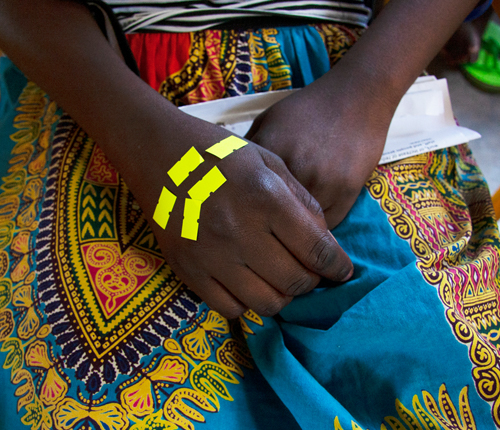
Community members in Busia, Uganda, place yellow stickers on an “evaluation wheel” to illustrate their feelings on various statements about abortion. The closer a sticker is placed to the center of the circle, the more agreement it indicates with each statement.
To get those conversations going, Ipas has partnered with several community-based organizations to sponsor “intergenerational” community dialogues, local radio programs, and workshops where participants can discuss and examine their attitudes about abortion.
Moraa Beryl, a champion of youth reproductive rights in Kenya, conducted some of the intergenerational dialogues, which she describes as giving people of different ages and genders the chance to talk, listen to and learn from each other. At one gathering in Kakamega, Beryl says, young people said a big challenge they face is “so much stigma and discrimination from community members on issues related to sexual and reproductive health.” The young people also made it clear that they want to be involved in developing and implementing policies to expand access to safe abortion and are willing to start speaking out and getting involved in finding solutions.
Outreach to schools—to both students and teachers—is also a crucial part of the fight against abortion stigma. “A lot of stigma plays out in the school setting,” says Gonzaga Ogambi, a community engagement advisor with the Ipas Africa Alliance. He recounts the story of one young girl who had gotten pregnant while in primary school. “When her fellow students and the teachers got to know about this, the girl was called bad names and was faced with taunts: ‘What’s a mother doing in school?’”
The project works to fight this kind of stigma by creating space within schools for discussion of the facts about abortion, contraception and other reproductive health issues. Ogambi says this has had a positive impact. For example, instead of trying to get pregnant girls expelled from school, some teachers are now providing students—and even other teachers—with information on where safe abortion services are available.
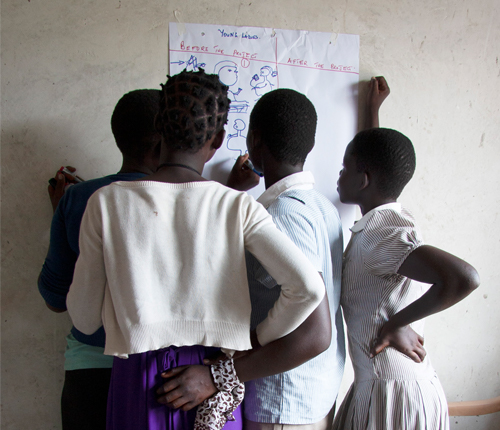
In this activity, young women in Merikit, Uganda, draw diagrams to convey the impact that stigma-reduction efforts have had in their community.
In Uganda, a major focus of the project has been to reduce abortion stigma among providers and other staff within health facilities. Part of this involves educating them on the legal status of abortion, which is restricted in Uganda, but legal in some circumstances. Many health workers, women, and law enforcement officials, however, are not knowledgeable about the law. In some cases, this has resulted in abortion providers being arrested, even when they have performed legal services. And in one instance, a facility stopped providing services altogether because a provider there had misinterpreted the law.
To combat stigma at the health-facility level, the project organizes “values clarification and attitude transformation” (VCAT) workshops at health facilities. These sessions encourage participants to explore their assumptions about abortion and examine their own role in assuring safe access to abortion care. Dr. Isaac Odongo of the Ipas Africa Alliance helps to conduct these workshops, and says it is one way to try to ensure that women and girls who go to health facilities for abortion services are not discriminated against and get quality care. Although the stigma within health facilities is entrenched, he is seeing positive changes:
“Many of those who are providing services are now becoming more positive about it and some are even becoming bold. When someone comes to arrest them, they insist they are not doing anything wrong and stand their ground.”

The project included outreach to community members in the rural community of Merikit, Uganda, whose health center is pictured here.
Ipas staff and partners also point to other important changes they have noticed in communities reached by the project. One outgrowth of the project is a network of women who have had abortions—some of which were unsafe—and are now speaking out about the dangers of unsafe abortion. They speak at community meetings and appear as guests on radio talk shows. They also refer women and girls to health facilities which provide abortion care, sometimes accompanying them to get the procedure.
And there are more positive signs: At one health facility where the community was engaged in the project, there was an attempt to arrest a health worker who was providing legal services. But community members stood up for him, saying his work was saving lives and was critical, and he was allowed to continue providing services without harassment.
Looking at these stories and the work the project has accomplished thus far, Nyamato says:
“Stigma remains, but we are making important steps forward. The way people in the community view and think about abortion is beginning to change. They are beginning to see abortion as saving women’s lives.”
Related reading
Unsafe abortion is a leading cause of maternal death in Kenya
Half of adolescent pregnancies in Uganda are unintended
For more information, contact [email protected].



